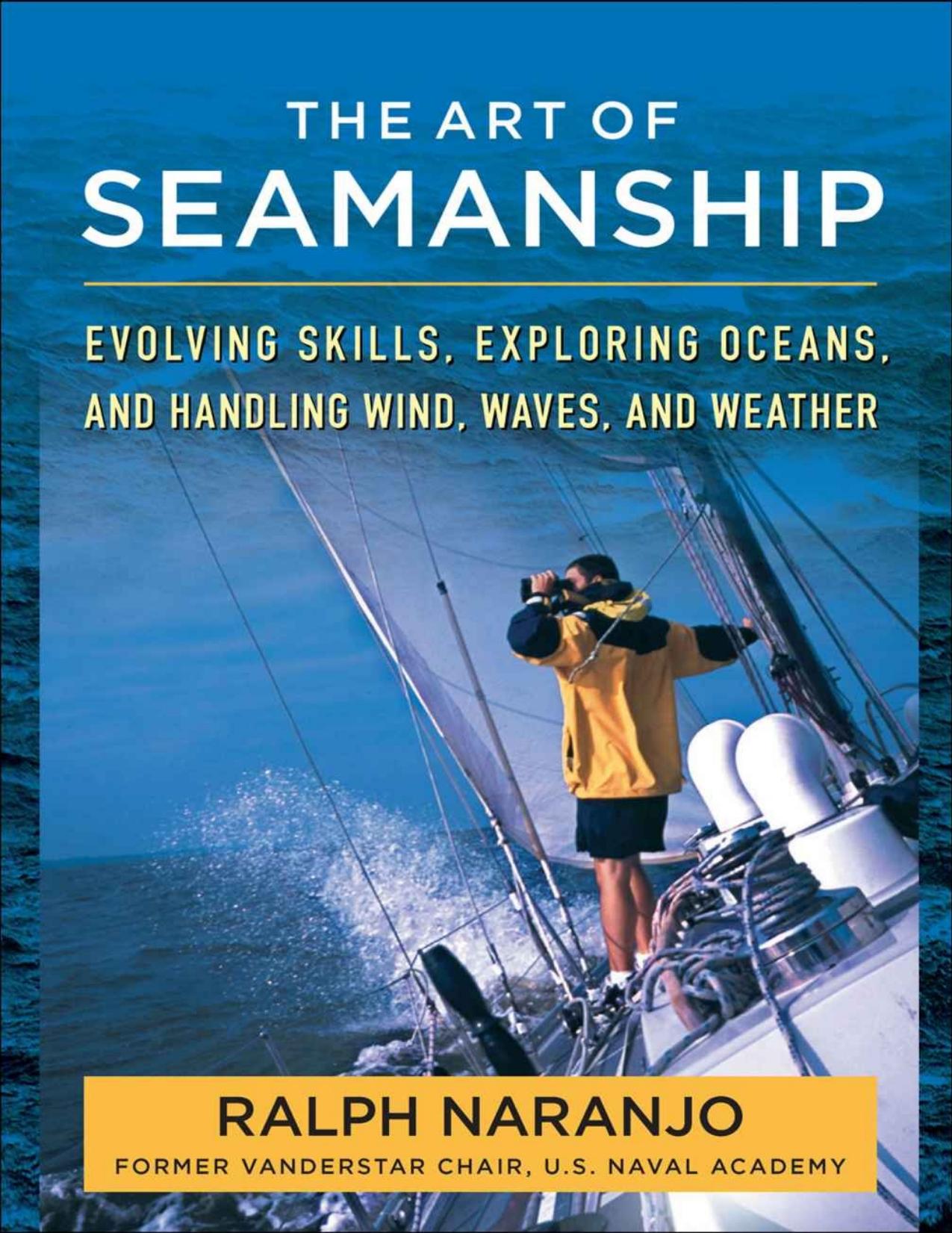The Art of Seamanship: Evolving Skills, Exploring Oceans, and Handling Wind, Waves, and Weather by Naranjo Ralph

Author:Naranjo, Ralph
Language: eng
Format: epub, pdf
Publisher: McGraw-Hill Education
Published: 2014-09-11T16:00:00+00:00
The tide rises or falls more rapidly around mid-tide than it does near the times of high and low water. Indeed, half of the total change in height occurs in the middle two hours of each six-plus-hour rise or fall. The “rule of twelfths,” as illustrated here, codifies this pattern.
Wind and weather systems can also influence tidal flow. For example, strong northerly conditions in the Bahamas, known as a rage, can blow surface waters off the banks and keep a low tide in place for days. The same holds true for the upper Chesapeake Bay when a strong winter northerly can maintain a day-long extremely low tide. At the other extreme, the combination of low atmospheric pressure and onshore wind can cause flooding of coastal lowlands during a storm high tide. Sailing Directions and cruising guides offer a deeper understanding of the interplay between weather conditions and tides in given areas.
To estimate the impact of a known tidal current on your course over ground, draw a vector on a piece of graph paper or directly on the chart in the direction of the course steered with a length scaled to the boat’s speed through the water. When drawn on the chart, this vector coincides with a DR plot. From the tip of this arrow, plot another vector representing the set (in degrees) and drift (in knots) of the current. Your vessel’s course and speed over ground are then defined by a third vector connecting the origin of the first vector with the end point of the second. The length of this third vector indicates your speed over ground, or SOG; its direction indicates the course over ground, or COG. (See the illustration.) This information can also be obtained from a chartplotter; simply call up functions such as tacking angles and current graphics and you’ll see how your boat is moving relative to course and speed over ground (COG/SOG). But if you lose electricity you’ll also lose this option, so backup plans remain an important priority.
When you calculate your progress along this COG vector after a given time—say 20 minutes or an hour—you’re calculating an estimated position. Unlike a DR position, an estimated position attempts to account for the influence of current and perhaps leeway. However, the estimated position is based on a predicted average current set and drift. And just as high winds tend to be gusty, strong currents tend to vary in velocity and direction over brief spans of time and distance.
Alternatively, and perhaps more commonly, let’s say you steer a given course at a given speed through the water. Then, when you obtain your next fix, you find you aren’t where your DR plot says you should be. In this case the vector difference between your actual position and your DR position represents the current set and drift.
The most recent development in monitoring set and drift involves networking a vessel’s knotmeter with other electronics, allowing you to compare speed through the water (STW) as measured by the knotmeter, with SOG, as measured by GPS.
Download
The Art of Seamanship: Evolving Skills, Exploring Oceans, and Handling Wind, Waves, and Weather by Naranjo Ralph.pdf
This site does not store any files on its server. We only index and link to content provided by other sites. Please contact the content providers to delete copyright contents if any and email us, we'll remove relevant links or contents immediately.
Breath by James Nestor;(2158)
The River by Peter Heller(2144)
Deep by James Nestor(2083)
Fatal Storm by Rob Mundle(2080)
Sea Survival Handbook by Keith Colwell(2041)
Lonely Planet Australia by Lonely Planet(1972)
Iced In by Chris Turney(1851)
Discover Australia by Lonely Planet(1842)
Lonely Planet Maldives (Travel Guide) by Planet Lonely & Masters Tom(1733)
One Girl One Dream by Dekker Laura(1579)
Looking for a Ship by John McPhee(1572)
Chicken Soup for the Ocean Lover's Soul by Jack Canfield(1549)
Ten Degrees of Reckoning: The True Story of a Family's Love and the Will to Survive by Hester Rumberg(1547)
Lonely Planet Australia (Travel Guide) by Lonely Planet & Lonely Planet(1511)
South with the Sun by Lynne Cox(1462)
The Wave In Pursuit of the Rogues, Freaks and Giants of the Ocean(1430)
Diver Down by Michael Ange(1421)
Marlinspike Sailor's Arts and Crafts by Barbara Merry(1409)
The Golden Rules: 10 Steps to World-Class Excellence in Your Life and Work by Bob Bowman & Charles Butler(1383)
